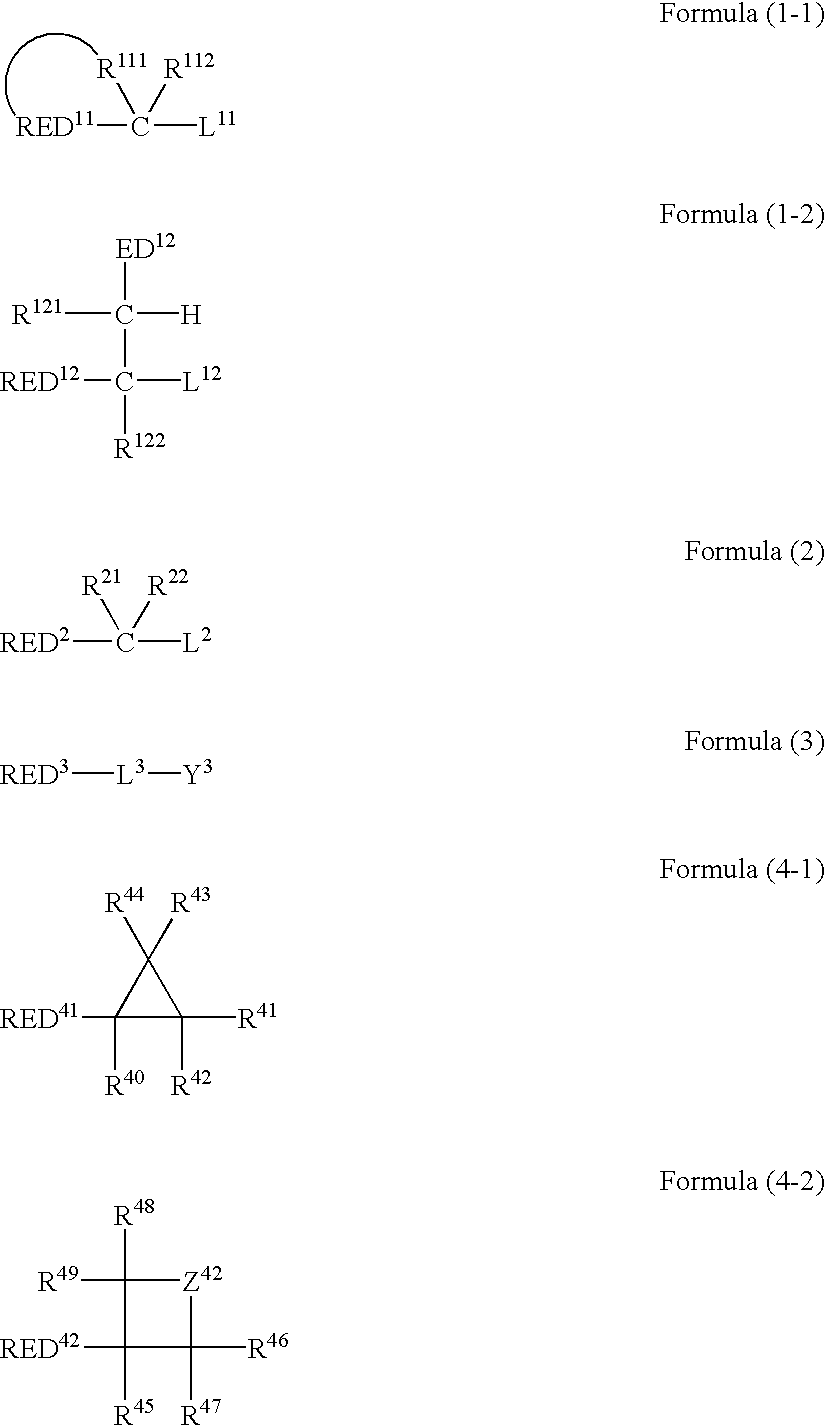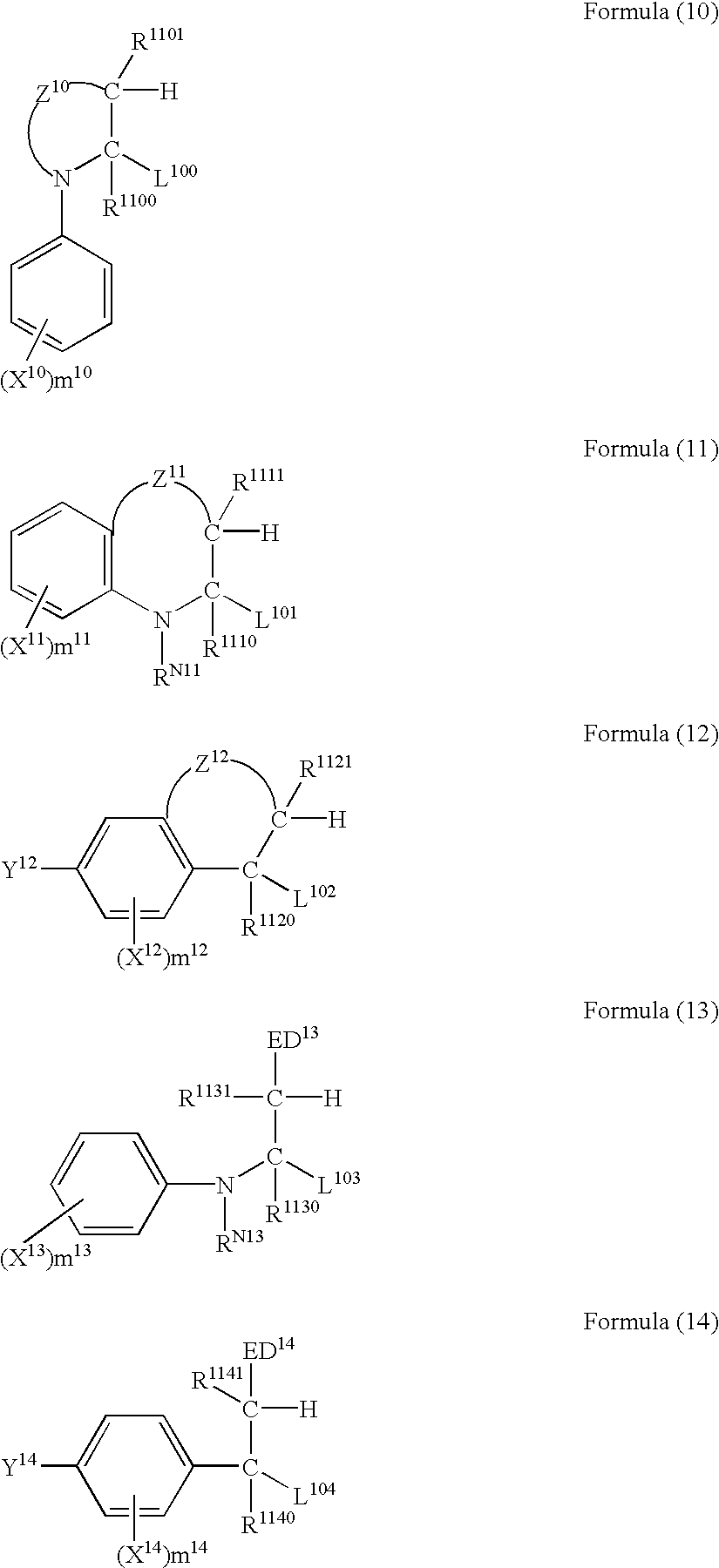Silver halide photographic light sensitive material
a technology of silver halide and photographic light, applied in the field of silver halide photographic light sensitive material, graphic arts, can solve the problems of air oxidation and instable, fluctuation of sensitivity, increase of fog during storage, and increased risk of air oxidation
- Summary
- Abstract
- Description
- Claims
- Application Information
AI Technical Summary
Problems solved by technology
Method used
Image
Examples
example 2
[0406] Samples were prepared in the same manner as in Example 1 except that carboxymethyltrimethythiourea compound or dicarboxymethyldimethylthi-ourea, which is a tetra-substituted thiourea compound, was used instead of the sodium thiosulfate used for chemical sensitization of Emulsion A in the same molar amount as sodium thiosulfate. The samples having the characteristics of the present invention showed good performances as in Example 1.
example 3
[0407] The same experiment as that of Example 1 was performed by using Developer (A) and Fixer (B) mentioned below. As a result, the samples having the characteristics of the present invention showed good performances as in Example 1.
18 Developer (A) [composition per liter of concentrated solution] Potassium hydroxide 60.0 g Diethylenetriaminepentaacetic acid 3.0 g Potassium carbonate 90.0 g Sodium metabisulfite 105.0 g Potassium bromide 10.5 g Hydroquinone 60.0 g 5-Methylbenzotriazole 0.53 g 4-Hydroxymethyl-4-methyl-1-phenyl- 2.3 g 3-pyrazolidone Sodium 3-(5-mercaptotetrazol-1-yl)- 0.15 g benzenesulfonate Sodium 2-mercaptobenzimidazole-5- 0.45 g sulfonate Sodium erysorbate 9.0 g Diethylene glycol 60.0 g pH 10.79
[0408] Upon use, a mother solution was prepared by diluting 2 parts of the above concentrated solution with 1 part of water. The mother solution showed pH of 10.65. A replenisher was prepared by diluting 4 parts of the above concentrated solution with 3 part of water. The re...
example 4
[0410] The same experiment as that of Example 1 was performed by using Solid Developer (C) and Solid Fixer (D) mentioned below. As a result, the samples having the characteristics of the present invention showed good performances as in Example 1.
20 Solid developer (C) Sodium hydroxide (beads, 99.5%) 11.5 g Potassium sulfite (bulk powder) 63.0 g Sodium sulfite (bulk powder) 46.0 g Potassium carbonate 62.0 g Hydroquinone (briquettes) 40.0 g
[0411] Together with the following components, briquettes were prepared.
21 Diethylenetriaminepentaacetatic acid 2.0 g 5-Methylbenzotriazole 0.35 g 4-Hydroxymethyl-4-methyl-1-phenyl-1.5 g 3-pyrazolidone 4-(N-Carboxymethyl-N-methylamino)-0.2 g 2,6-dimercaptopyrimidine Sodium 3-(5-mercaptotetrazol-1-yl)- 0.1 g benzenesulfonate 0.1 g Sodium erysorbate 6.0 g Potassium bromide 6.6 g
[0412] The briquettes were dissolved in water to a volume of 1 L (pH 10.65).
[0413] As for forms of the raw materials, bulk powder means an industrial product itself, and as the...
PUM
| Property | Measurement | Unit |
|---|---|---|
| optical density | aaaaa | aaaaa |
| pH | aaaaa | aaaaa |
| pH | aaaaa | aaaaa |
Abstract
Description
Claims
Application Information
 Login to View More
Login to View More - R&D
- Intellectual Property
- Life Sciences
- Materials
- Tech Scout
- Unparalleled Data Quality
- Higher Quality Content
- 60% Fewer Hallucinations
Browse by: Latest US Patents, China's latest patents, Technical Efficacy Thesaurus, Application Domain, Technology Topic, Popular Technical Reports.
© 2025 PatSnap. All rights reserved.Legal|Privacy policy|Modern Slavery Act Transparency Statement|Sitemap|About US| Contact US: help@patsnap.com



